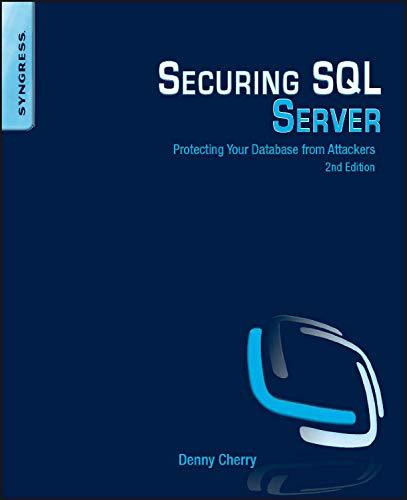Question
Code to call function: % ------------------------------------------------------------------------- % Case 2: One die. Three sets of rolls. % INPUTS: % rollSet1, array of rolls (1 x nrolls1)

Code to call function:
% -------------------------------------------------------------------------
% Case 2: One die. Three sets of rolls.
% INPUTS:
% rollSet1, array of rolls (1 x nrolls1)
% rollSet2, array of rolls (1 x nrolls2)
% rollSet3, array of rolls (1 x nrolls3)
% OUTPUTS:
% binpctarr, bin pcts for each set (3 x 6)
% Note. binpctarr(1,1:6) is for set 1, etc.
% difsqbinpctarr, diff squared for binpcts (3 x 6)
% variances, mean difsquares for each set (3 x 6)
% -------------------------------------------------------------------------
% SETUP SECTION -----------------------------------------------------------
% generate roll sets
nrolls1= 12;
nrolls2= 120;
nrolls3= 1200;
rollSet1= zeros(1,nrolls1);
rollSet2= zeros(1,nrolls2);
rollSet3= zeros(1,nrolls3);
for nr=1:1:nrolls1
rollSet1(1,nr)= randi(6);
end
for nr=1:1:nrolls2
rollSet2(1,nr)= randi(6);
end
for nr=1:1:nrolls3
rollSet3(1,nr)= randi(6);
end
% SIMULATION SECTION ------------------------------------------------------
[binfracs,difsqbinfracs,variances]= Dice_2_fcn( rollSet1,rollSet2,rollSet3 );
% DISPLAY SECTION ---------------------------------------------------------
% setup section
fprintf(' Dice 2 setup: ');
fprintf(' rollSet 1 2 3 ');
fprintf(' nrolls %4.0f %4.0f %4.0f ',nrolls1,nrolls2,nrolls3);
% fmt1= [' rollSet(1,1:12)= [',repmat('%3.0f',1,12),'] '];
% fprintf(fmt1,rollSet(1,1:12));
mean1= mean(rollSet1);
mean2= mean(rollSet2);
mean3= mean(rollSet3);
fprintf(' means %4.2f %4.2f %4.2f ',mean1,mean2,mean3);
% results section
fprintf(' Dice 2 results: ');
% fmt2= [' bincount= [',repmat('%5.0f',1,6),' ] '];
% fprintf(fmt2,bincount(1,1:6));
fmt3= [' binfracs [',repmat('%7.3f',1,6),' ] '];
fprintf(fmt3,binfracs(1,:));
fprintf(fmt3,binfracs(2,:));
fprintf(fmt3,binfracs(3,:));
fmt4= [' difsqbinfracs [',repmat('%9.6f',1,6),' ] '];
fprintf(fmt4,difsqbinfracs(1,:));
fprintf(fmt4,difsqbinfracs(2,:));
fprintf(fmt4,difsqbinfracs(3,:));
fprintf(' variances %9.6f %9.6f %9.6f ',variances(1:3,1));
fprintf(' ');
% -------------------------------------------------------------------------
Case 2
Setup: Make 3 sets of rolls nrolls1, nrolls2, nrolls3
Outcome: 3 sets of roll results rollSet1 (1 x nrolls1), etc
Enter your function from Test Case 2 into the space below. Click the run button to test your code output using the provided script Click the submit button to have your work assessed. % Case 2: One die. Three sets of rolls. % INPUTS: % rollseti, array of rolls (1 x nrolls1) % rollset2, array of rolls (1 x nrolls2) % rollset3, array of rolls (1 x nrolls3) % OUTPUTS: % binpctarr, bin pcts for each set (3 X 6) Note. binpctarr(1,1:6) is for set 1, etc. % difsqbinpctarr, diff squared for binpcts (3 x 6) % variances, mean difsquares for each set (3 x 6) Function i function [binfracs, difsqbinfracs, variances] = Dice_2_fcn(rollseti, rollset2,rollset3 ) Enter your function from Test Case 2 into the space below. Click the run button to test your code output using the provided script Click the submit button to have your work assessed. % Case 2: One die. Three sets of rolls. % INPUTS: % rollseti, array of rolls (1 x nrolls1) % rollset2, array of rolls (1 x nrolls2) % rollset3, array of rolls (1 x nrolls3) % OUTPUTS: % binpctarr, bin pcts for each set (3 X 6) Note. binpctarr(1,1:6) is for set 1, etc. % difsqbinpctarr, diff squared for binpcts (3 x 6) % variances, mean difsquares for each set (3 x 6) Function i function [binfracs, difsqbinfracs, variances] = Dice_2_fcn(rollseti, rollset2,rollset3 )
Step by Step Solution
There are 3 Steps involved in it
Step: 1

Get Instant Access to Expert-Tailored Solutions
See step-by-step solutions with expert insights and AI powered tools for academic success
Step: 2

Step: 3

Ace Your Homework with AI
Get the answers you need in no time with our AI-driven, step-by-step assistance
Get Started


